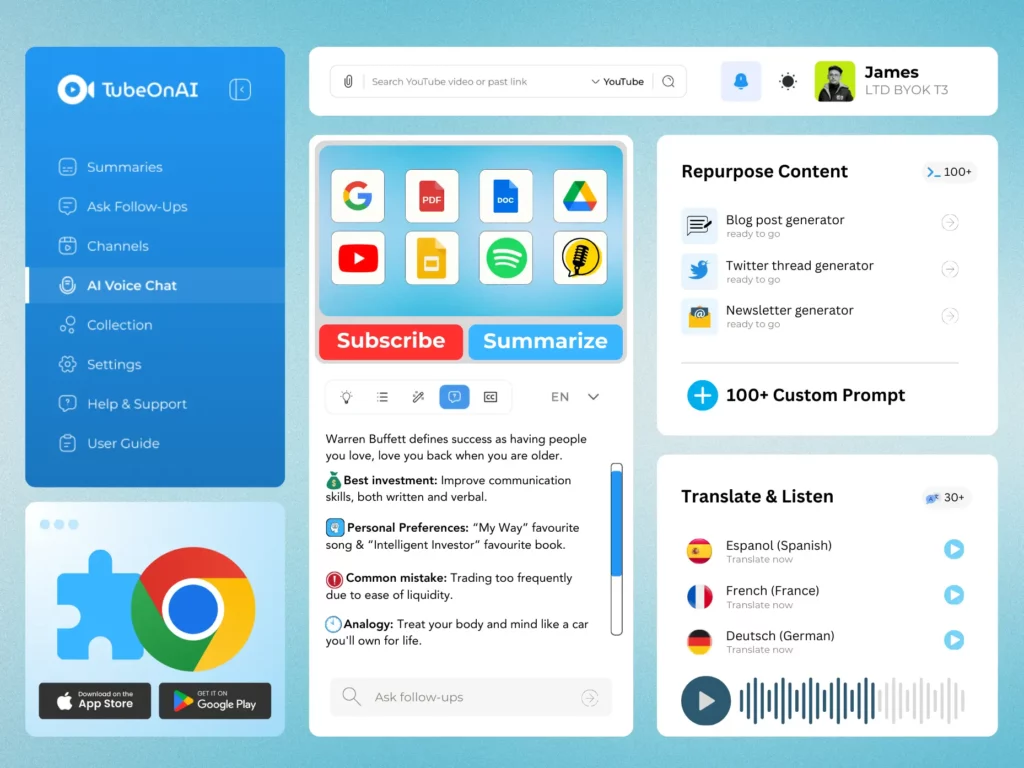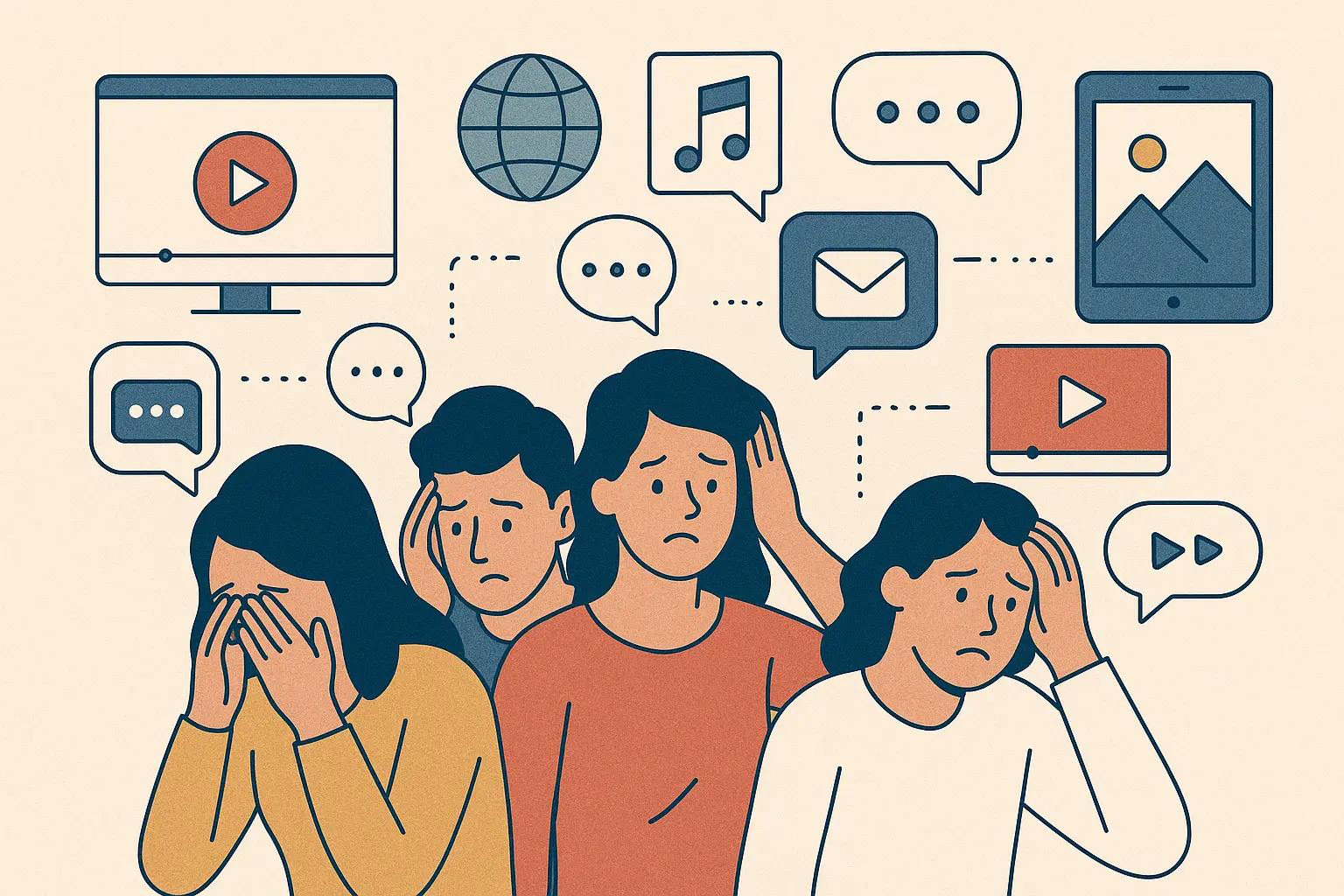It’s no surprise that content overload is leaving many of us feeling frustrated, anxious, and exhausted. Taking steps like a digital detox can help dial down the screen time and bring some mental clarity back into our lives.
Managing information consumption effectively comes down to a few simple strategies. Learning how to prioritize, using tools like an RSS feed or AI for digital content curation, and keeping personal goals front and center can all make a big difference. Even just skimming, blocking out distractions, and practicing smart information management can help keep the flood of information manageable.
Balancing screen time and boosting productivity and focus can make a huge difference in handling content overload and free up space for what truly matters.
How to Deal with Too Much Content: 7 Strategies You Should Know
The things you will learn from the following sections are not a pep talk. Rather, these suggestions are designed for someone like you who needs to keep up with the digital world and perform better in your job. So, give attention to each part of this article so you don’t have to attend more again.
Set an RSS Feed
Reading all the blogs at once can be overwhelming, especially for me. To avoid this problem, I set up an RSS feed.
All you have to do is subscribe to those websites you intend to follow. This will filter out other blogs and show only content from your subscribed sites.
As they’ll appear with a big title, you can click the ones you think you should read. Thus, you can reduce the content overload and work efficiently.
Psychologists believe that content overload is hurting our mental health. That’s why I think an RSS feed is the way to go.
Don’t Dig Too Deep
It is very important to stick to the topic you want to read. While little interest in related issues is understandable, it won’t help you manage ample content. A study at the University of California says that divided attention affects our memories.
To avoid those additional blogs, focus only on the topic you must read. Constantly remind yourself of what is more important to you at this moment.
If you find yourself reading content that isn’t useful, close the tab and return to what you need.
Keep Content to Read for Later
As you skip those interesting blogs while reading the main content, you may feel that you’re losing something important. In this case, you can always save the skipped content to read later.
To do this, use bookmarks and sort the pages properly. This option is available at the top right corner of any browser. Only a minority of people use this technique. You can also use Pocket or Instapaper App to keep content ready for later.
Skim Instead of Reading
You don’t need to read all the content literally. Trust me, not all the writing is worth enough for proper reading. Numerous poorly written content is out there and is only worth 5 to 10 minutes.
According to a study, more than 42% of blog readers believe that skimming helps them manage an immense amount of content. You can be one of them. Just read the title and gradually stare at the body of the text thoroughly.
Reduce Switch Reading
While consuming content, you may get suggestions for other related content. This is where you must hold your curiosity. Instead of moving on to the next content, finish the one you’ve started.
Researchers think that rapidly consuming different types of information reduces learning efficiency. Every time you switch content, your brain has to adjust from one set of content patterns to another.
It requires a lot of mental effort and eventually leads to cognitive overload. So, switching content won’t help you to learn anything properly.
That’s why digging too deep is not the way to go.
Take Notes and Highlight
Dealing with too much content means handling a chunk of information. And to remember that information, there is no better way than noting them.
If you come across information you might need in the future, please note it down. You can use a Spreadsheet or Google Docs to write down notes in any way you like.
If you’re using a spreadsheet, you can customize the layout to ensure your notes are structured in a way that reminds you of their intended meaning.
It’ll reduce pressure on your brain and keep you curious about learning more.

Use AI Tools
Using AI tools can make your job much easier. One such tool is TubeOnAI, which allows you to summarize anything.
If you have extensive content to read or a podcast to watch, this app can summarize that content section-wise. It also features video-to-blog post conversion features. TubeOnAI can translate multiple languages, too.
You can brainstorm on any topic you enter, thanks to the app’s chat feature. Just insert the file on the app, click ‘summarize,’ then click ‘follow-up question.’ You can ask about the file through this live chat and get the appropriate answer.
Not only that, TubeOnAI also allows you to listen to the audio version of a file. If you need to write a report on your content, you can do this, too. Overall, TubeOnAI is a complete package that you can make your life easier.
Also read:
How Do You Know Which Content to Deal With
Deciding which content to consume can be difficult as there is so much content out there. Yet, it’s not that difficult either if you know which content to consume. You just have to be specific about your goal, content source, and time limit.
Along with these, here are a few more tricks to select content that only matters to you.
1. Define Your Goal
Determine which topic you’re most passionate about. Be clear about your need for professional or personal growth. Repeatedly remind yourself of this while consuming content. If you ever plunge into content for entertainment, remembering your goal will get you back on track.
2. Curate Your Sources
Try to follow only those sources that provide insightful content. Don’t fall into the trap of fluffy words and waste your time.
Once you find the exact sources that benefit you, use content curation tools to gather information from multiple of your selected sources in one place. Use Feedly or Pocket for this, as they are the top tools for this job.
3. Prioritize Content Types
As I have said earlier, not all the content is worth reading. So, which content is worthy? To determine this, read the headlines and summaries for articles and reports to see if the content meets your needs.
If you’re dealing with video or audio content, check its description and reviews first. Only consume the full content if it fulfils your needs—otherwise, skim.
4. Review Regularly and Adjust
From time to time, assess the content you’ve consumed. Find its relevance to your goals. Adjust your sources and priorities according to your requirements if anything is lacking. Always be open to changing your content consumption habits as you develop as a more strategic consumer.
Frequently Asked Questions
How do you deal with too much information?
Investing in the right tool, like TubeOnAI, can help you deal with too much information. Limit your time-consuming information and be strategic while processing it. Also, spend your time wisely when communicating. These three things can work better.
Is too much content a bad thing?
Not if it benefits you in the end. But if the information you’re taking is useless for your growth, it wastes time. That’s why you must be selective about which data to take and which to skip.
What happens when you consume too much content?
When you consume too much unnecessary content, it’s called digital overload. It can lead to anxiety, fatigue, or even depression. Consuming content strategically and selectively is the way to go in this case.
Conclusion
As you’ve finished this broad article, you surely have the patience to read. You just need some tips and strategic help to fine-tune your ability to deal with multiple contents.
I’ve written those tips and tricks and suggested an app for help. If you follow my advice, dealing with too much content will be easy for you.


